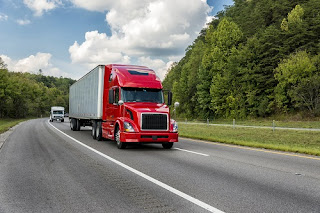Caught Between a Truck & a Hard Place
By Diane Tait
 |
| Image courtesy flickr |
What’s the rationale behind the bill? – After 38 years, it
was felt that commercial truck insurance requirements was woefully behind the
times when it came to compensating victims of truck accidents in the US. As is often the case in the aftermath of many
truck-related accidents, $750,000 is barely adequate to cover the associated
medical costs, especially if it is divided among multiple plaintiffs in the
same vehicle or multiple vehicles involved in the crash. While $750,000 may have been adequate back in
the 80’s and 90’s to compensate victims, medical costs have soared in the new
millennium. This says nothing about such
things as loss of income, property damage or pain and suffering endured by many
survivors of truck-related accidents.
Back in 2013, the Federal Motor Carrier
Safety Administration reported that trucks and motor carriers engaged in
the commercial transportation of property must be willing to shoulder financial
responsibility resulting from truck crashes.
The FMCSA further admitted that the costs for severe and critical
injuries resulting from truck crashes can easily exceed $1 million. They then added that current truck liability
limits are insufficient to cover truck-related catastrophic injuries due to
rapidly increasing medical costs.
In 2014 FMCSA reported that “Over
the past 29 years, while insurance premiums have declined, the decreasing real
value of the current minimum levels has effectively removed the function of
insurance in covering catastrophic crashes, as medical and other crash-related
costs have increased significantly.”
 |
| Image courtesy A&B Insurance |
Other complaints faced by existing drivers include the
requirement of installing an Electronic Logging Device in their truck to automatically
record the hours of service logged.
Other than the cost of the device, truckers have complained about the
time it takes to install an ELD, as well as the affrontery of having their
every move tracked. While the DMV considers
the devices to be a safety enhancement, most truckers consider them to be an
intrusive black box that is more a hindrance than a help.
 |
| Image courtesy Pixabay |
Other competition will soon include the introduction of autonomous
trucks which require no driver. On June
28, 2019 Starsky Robotics completed its first test of a driverless big rig in Florida.
While the 10-mile test run carried no
freight, its success is hardly likely to be the last. Other manufacturers including
Freightliner and Volvo Trucks are also in the process of developing autonomous
trucks. Major shippers like UPS are
investing heavily in the development of driverless trucks that could be on the
road within 5-10 years. Since long haul
drivers are required to rest 10 hours for every 11 hours on the road, the
availability of automated trucks that only need to pull over to fuel up and
offload could conceivably be another stumbling block that truckers will soon
have to deal with.
Fully automated trucks aside, today’s truckers are forced
to deal with all kinds of automation as their cabs see ever more sophisticated
electronic components and apps added that are designed to make their jobs
easier and safer. That being said, it
takes time to integrate and train on their use, which is a luxury that many
truckers do not have.
In the meantime, as the world of trucking becomes ever
more complicated and automated, truck drivers will have to ask themselves if the
outlay of time and money is worth the effort or if they’re doomed to be forever
caught between a truck and a hard place.
Diane Tait owns and operates A&B
Insurance. To find out more about how you can save money on commercial truck insurance, go to her site or fill out the form at right.


It just goes to show you that technology is increasing in every industry these days.
ReplyDeleteBig changes in the trucking industry. No wonder carriers are looking to automate trucks.
ReplyDelete